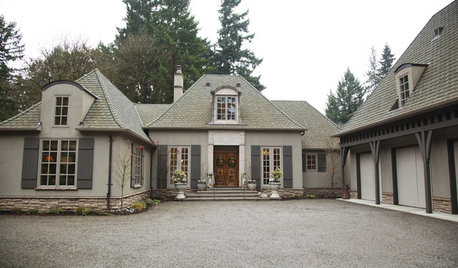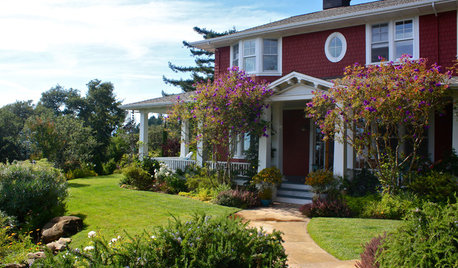heirlooms and heirloom-based hybrids
achake01
14 years ago
Related Stories

HOUZZ TOURSMy Houzz: Color and Heirlooms Combine in a Welcoming Bungalow
Inherited furniture mixes with bright hues in a 1921 Dallas home that embraces the neighborhood and modern life
Full Story
HOUZZ TOURSMy Houzz: In Brooklyn, Family Heirlooms and a Global Perspective
Family keepsakes, African art and black walls add character to a couple’s New York apartment
Full Story
RUSTIC STYLEHouzz Tour: A Modern Ranch Shines in the Alberta Foothills
A mix of family heirlooms, rustic details and Scandinavian style infuses a family’s weekend home in Canada
Full Story
HOUZZ TOURSMy Houzz: Creative Denver Studio
Reinvented finds, artwork and heirlooms create a highly personal home
Full Story
FEEL-GOOD HOMEInherited Pieces: Embrace the Approach That Works for You
How you remember and honor loved ones through heirlooms is your decision alone
Full Story
HOUZZ TOURSMy Houzz: Whimsical Chateau in the Pacific Northwest
Collections, heirlooms and antique finds put a quirky, personal stamp on an Oregon home
Full Story
DECORATING GUIDESRoom of the Day: Black, White and Red All Over
Custom fabric, heirlooms, bold color and a beloved collection of books cozy up this farmhouse library
Full Story
HOUZZ TOURSMy Houzz: A Hilltop Family Home in Santa Cruz
Couple draws dream home inspiration from 'A Pattern Language' in thoughtfully placing windows, nooks and heirlooms
Full Story
DECORATING GUIDESAtten-TION! Win Design Battles With Military Decor
Rally the troops at your home base with World War II–inspired furniture and accessories
Full Story
EDIBLE GARDENSSummer Crops: How to Grow Tomatoes
Plant tomato seedlings in spring for one of the best tastes of summer, fresh from your backyard
Full Story


mulio
mulio
Related Discussions
Heirloom peppers similar to Big Bertha hybrid?
Q
heirloom substitute for cupid hybrid
Q
Heirloom Hybrid?
Q
If a seed says neither hybrid nor heirloom, what should you assume?
Q
carolyn137
HoosierCheroKee
wiringman
bigdaddyj
trudi_d
carolyn137
trudi_d
HoosierCheroKee
carolyn137
trudi_d
korney19
mrs.b_in_wy
bigdaddyj
bigdaddyj
mrs.b_in_wy
HoosierCheroKee
chinamigarden